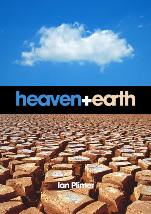Heaven and Earth. Global warming: the missing science
Ian Plimer
Published by: Quartet Books Limited, London
Publication date: 2009
ISBN: 978-0-7043-7166-8
List price: £25.00
504 pp
www.quartetbooks.co.uk

In the opening paragraph of this controversial book, Ian Plimer makes his case that geology should be at the heart of discussions on the climate; what has happened in the past can teach us about the present. Plimer, himself a geologist and an Honorary Fellow of this Society, feels that few scientists are as well equipped as we are to take the necessarily broad, integrated view of the problem of climate change - except he does not see it as a problem, since he believes that in geological and historical times warmth tended to equate with a “bountiful” Earth.
He is uncomplimentary about the work of the Intergovernmental Panel on Climate Change (IPCC) and lambasts the narrowness of its science, its lack of rigour and errors, as well as the Panel’s reliance on computer modelling - omitting even to model clouds, which he says have a massive effect on climate. (The book was written before the recent controversies surrounding the IPCC.) The well-known IPCC ‘hockey-stick’ graph of Mann and others, purporting to show the 20th Century warming as unique, comes under particularly detailed attack.
Plimer accepts the evidence for 20th Century global warming although, as every geologist knows, Earth has warmed many times in the historical and geological past; and it cooled from about 1940 to 1976, and, according to Plimer, has again since 1998, notwithstanding the continued rise in CO
2.
He devotes chapters to the Sun, Earth, ice, water and the atmosphere, and his arguments are dense and detailed, supported by no fewer than 2300 footnote references. His theme throughout is that climate systems are far too complex to be modelled by computers, and that the effect of anthropogenic CO
2 is small compared with, for example, variations in solar and cosmic activity. CO
2 undeniably absorbs infra-red energy, but water vapour has a far greater effect. Moreover, most of the absorption by CO
2 is achieved by quantities up to about 200 ppmv; above that the ‘law of diminishing returns’ comes into play. In former geological times (particularly the Early Palaeozoic and Mesozoic) CO
2 levels were many times their present level (385 ppmv) and yet there was no runaway greenhouse or ‘tipping point’ as alarmists warn.
There is much to ponder in this encyclopaedic tour de force, but even apart from the obvious (climate change adherents have already attacked it vociferously) it is not without irritations. For example, Plimer employs dozens of graphs to make his points, but annoyingly some plot time from left to right and others from right to left. Worryingly, from the unsupported assertions it contains, and contradictory statements it makes, one gets the impression the book was written in a hurry.
Nevertheless it is an important book, written in what the author perhaps sees as a repeat of his earlier campaign against Christian fundamentalist “Young Earth” creationism in Australia. In Plimer’s words: ‘Global warming has become the secular religion of today’. If this book encourages scientists to exercise their natural scepticism, it will have achieved its purpose. Plimer has little time for the ‘But there’s a consensus…..’ argument, mindful of the consensus of experts who steered the world economy into its present problems. Science does not progress by consensus, he points out, but through free-thinking.
Michael F Ridd